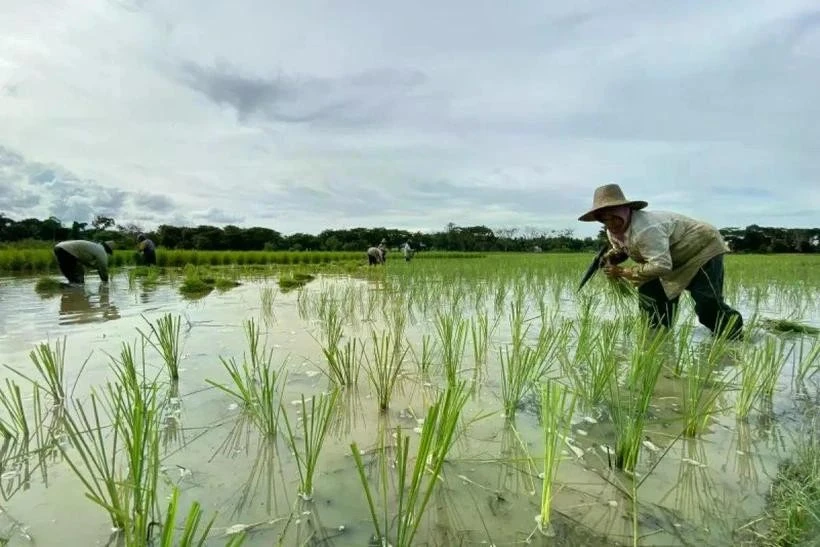
Indonesian farmers plant rice in Lokpaikat District in Tapin, Tapin Regency, South Kalimantan. (Photo: ANTARA)
Agriculture is emerging as a key driver of Indonesia’s economic growth, especially in the first quarter of 2025, according to the latest report by the Indonesian Institute for Development of Economics and Finance (INDEF).Abra Talattov, Director of INDEF’s Centre for Food, Energy, and Sustainable Development, reported that the agriculture, forestry, and fisheries sector posted the highest growth among all economic sectors, reaching 10.52% in Q1, mainly due to bumper rice and corn harvests. Rice output surged by 51.45% while corn production rose by more than 39%.
This performance was supported by favourable weather conditions and an earlier-than-usual harvest season. The main harvest coincided with the Ramadan and Eid al-Fitr period (March–April), when demand for staple foods typically spikes, further driving production.
In addition to production output and GDP contribution, the sector also demonstrated strong labour absorption capacity. Data from Indonesia’s Central Statistics Agency (BPS) showed that as of February 2025, agriculture employed 28.5% of the country’s total workforce—more than any other sector including trade and manufacturing.
Over the past six months, the sector generated around 850,000 out of the total 890,000 new jobs created nationwide, underscoring its vital role in sustaining economic stability, particularly for lower-income communities.
To sustain this momentum, INDEF recommends advancing agricultural trade reforms, strengthening the role of Bulog, and implementing fair pricing mechanisms to protect farmers during peak harvest seasons.
VNA